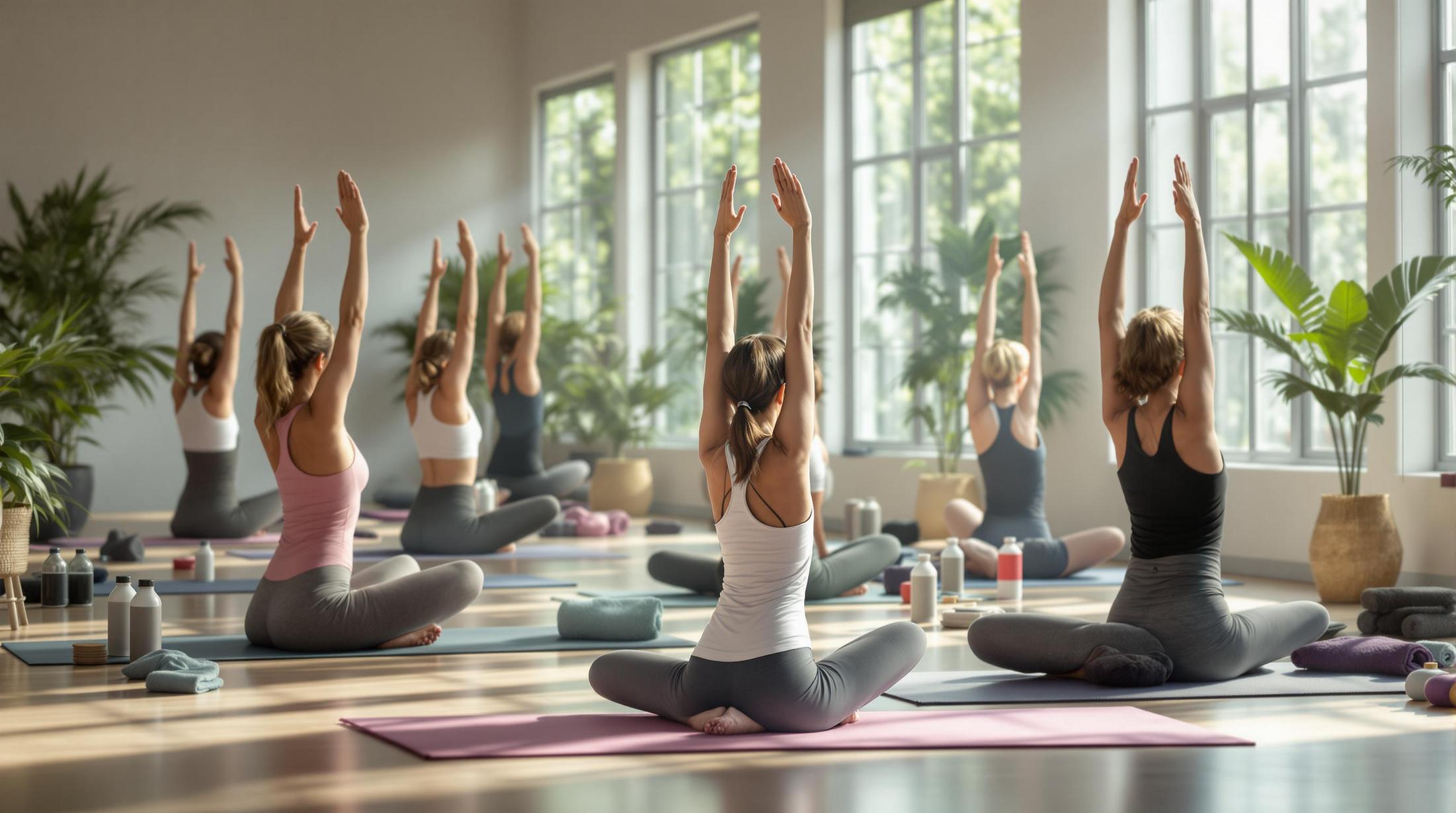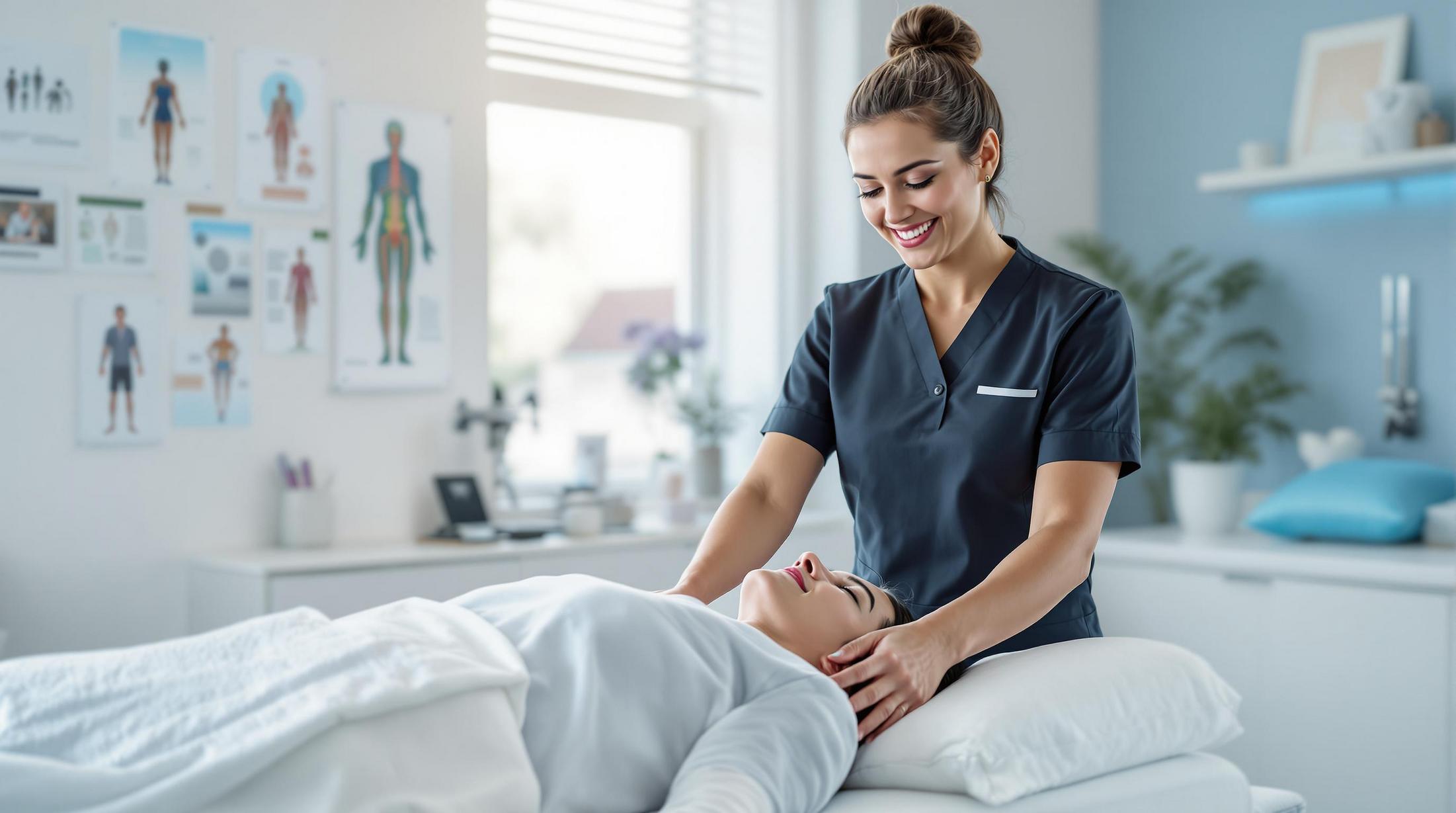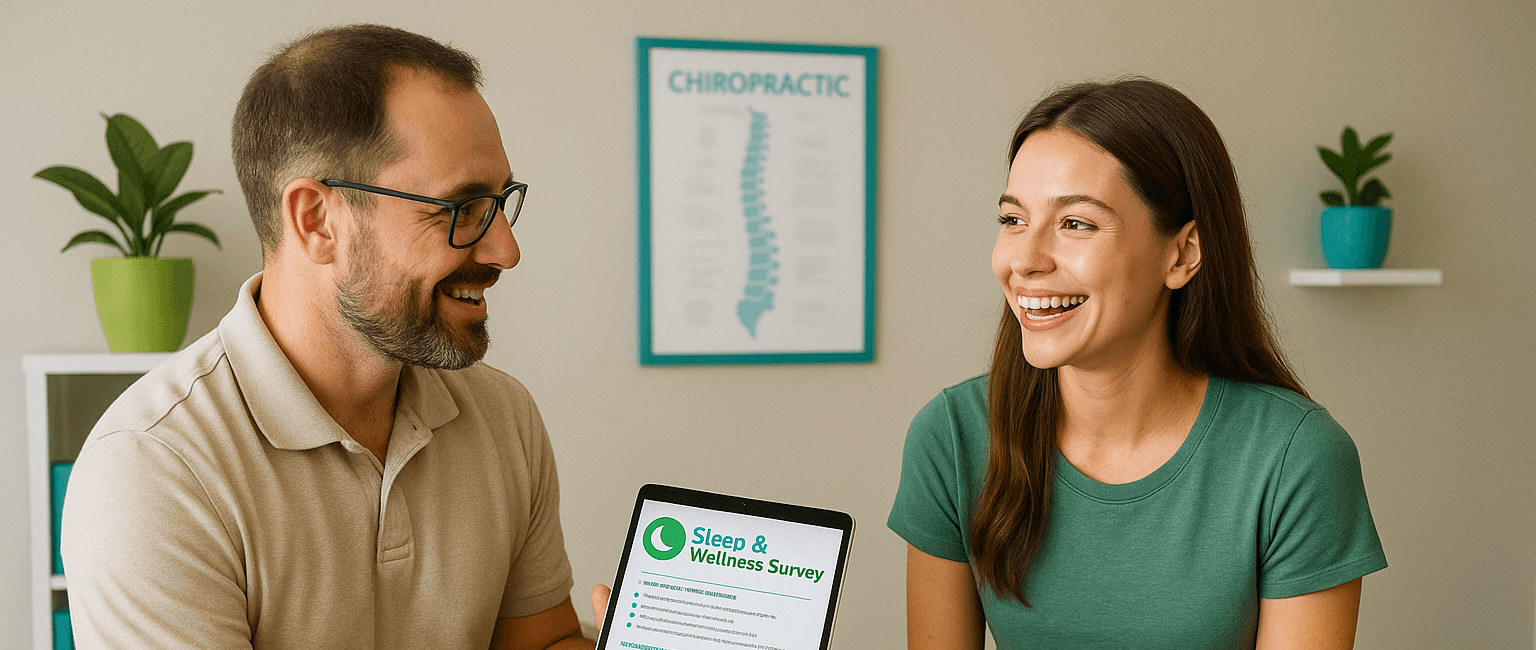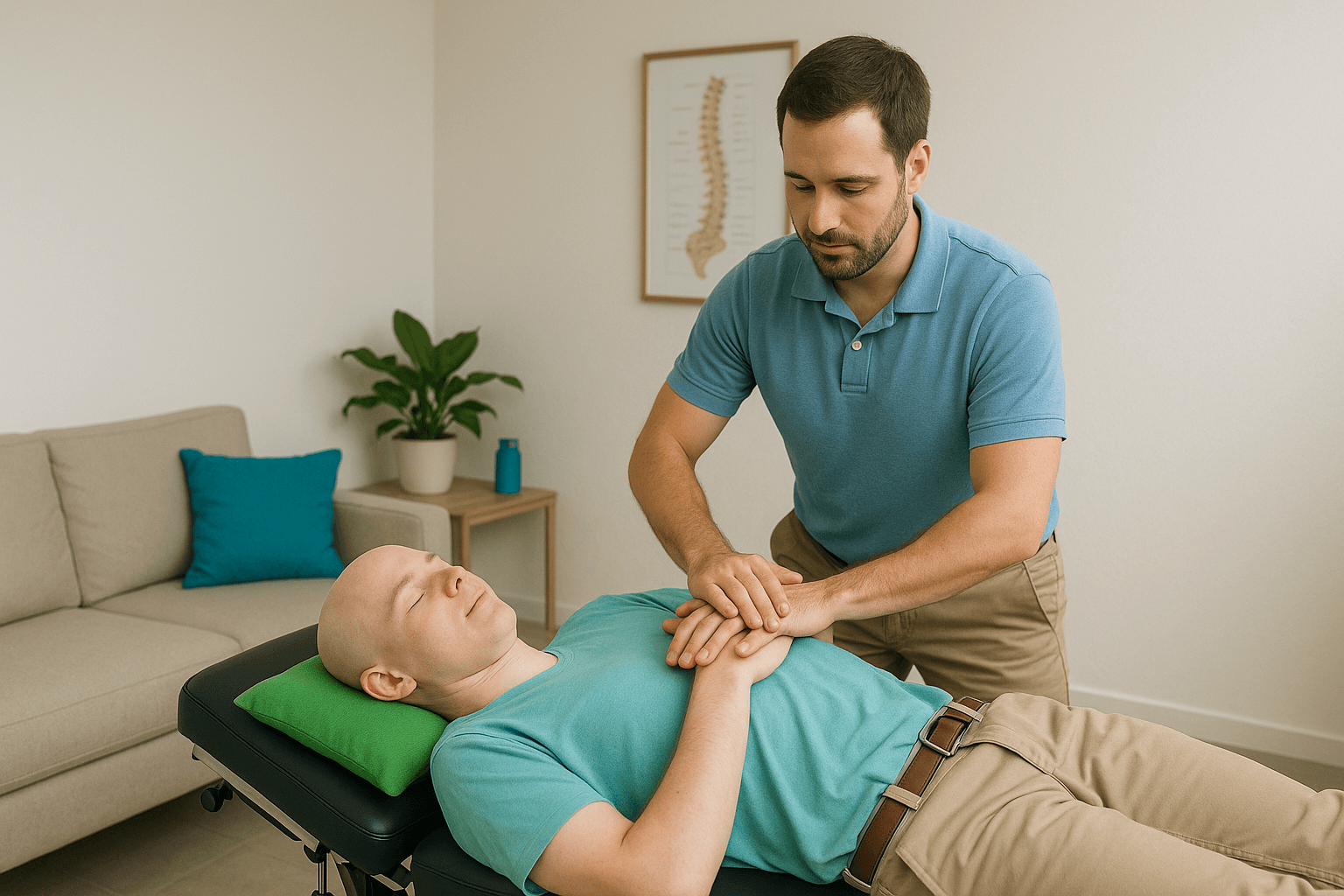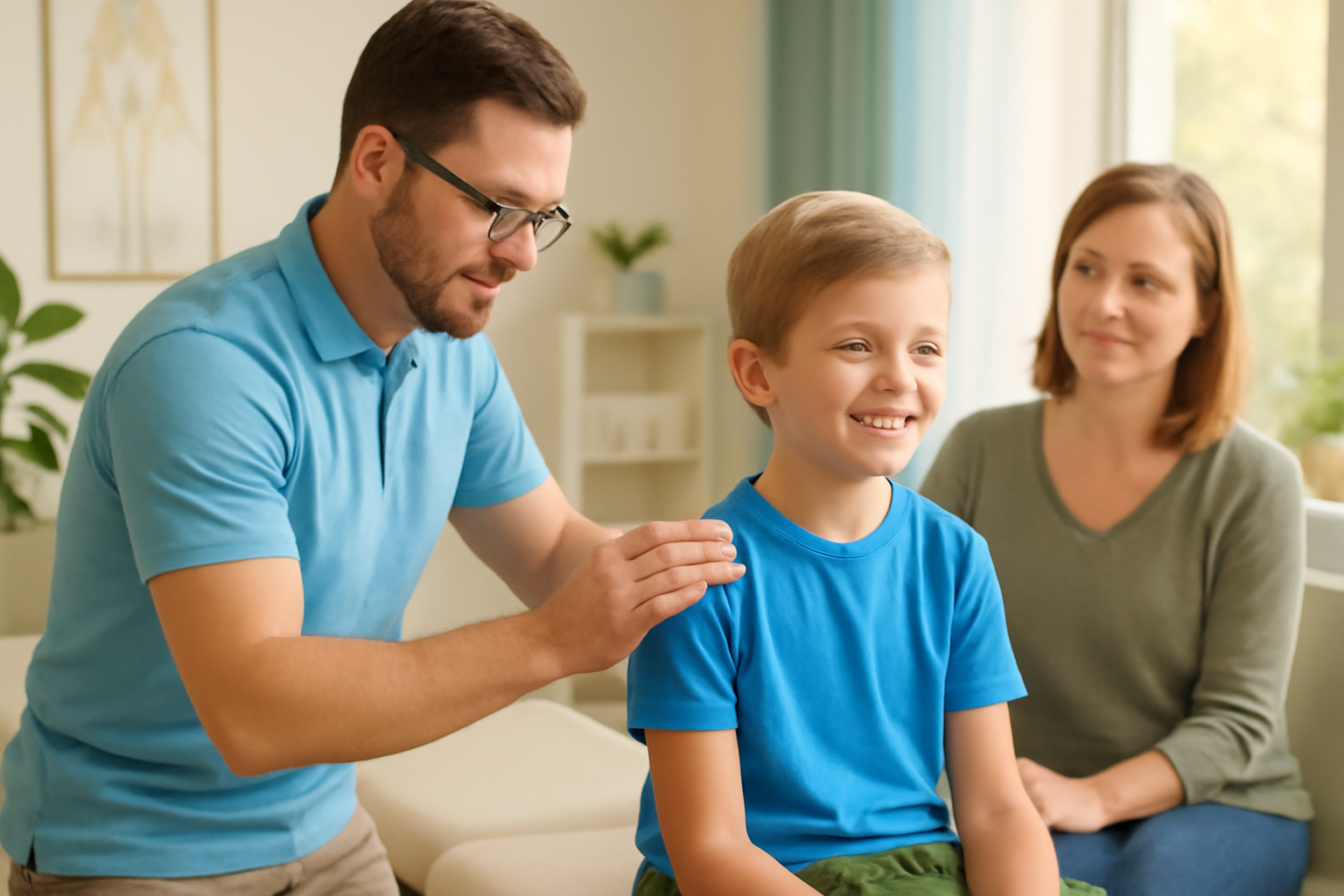When most people think about “good posture,” they imagine standing tall to look confident and alert. But posture isn’t just about appearances. The way you hold your body has a real impact on your health, mobility, and independence — especially as you age.
A large community study, known as the Rancho Bernardo Study, revealed just how serious poor posture can be. Researchers followed more than 1,500 older adults to see how a hunched-forward upper back (called hyperkyphosis) affects everyday function. Their findings may change the way you think about sitting, standing, and spinal health.
Jump to:
TLDR – Quick Guide
- Hyperkyphosis = excessive upper spine curvature, often mistaken as just “bad posture”
- Study of 1,578 older adults linked forward hunch with worse strength, balance, and mobility
- 44% of men and 21% of women showed signs of hyperkyphosis via block test
- More curve = 2–3x higher chance of difficulty with daily tasks like walking or climbing stairs
- 3+ blocks = 3.7x more likely to need arms to rise from a chair
- Results stayed consistent even after adjusting for age, bone density, and health factors
- Hyperkyphosis is an independent marker of functional decline
- Advanced Biostructural Correction™ (ABC) may help reverse structural imbalances and restore posture
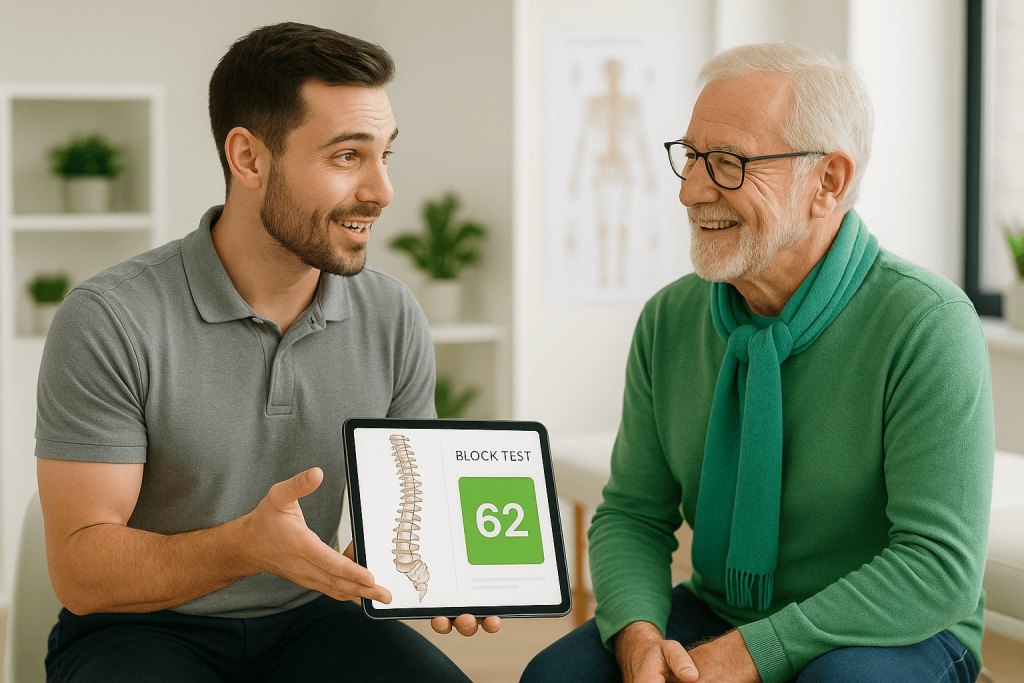
What Is Hyperkyphosis?
Hyperkyphosis is a technical term for excessive rounding of the upper back. You might recognize it as a “dowager’s hump” or the stooped posture many people develop later in life. While some forward curve in the spine is normal, too much can push the head and shoulders forward, leading to a hunched appearance.
Many people assume this is just “bad posture” or “part of aging.” But the Rancho Bernardo Study proves it’s much more than a cosmetic issue.
The Rancho Bernardo Study: A Closer Look
Researchers studied 1,578 men and women, ages 55 and older, living in Rancho Bernardo, California. They carefully measured posture by asking participants to lie on a flat table. If someone’s head couldn’t rest flat, they placed 1.7 cm blocks under it until the head was neutral. The number of blocks needed indicated how far forward the spine was curved.
Then, they tested physical function in two ways:
- Self-reports: Did people struggle with bending, walking, or climbing stairs?
- Performance tests: How strong was their grip? Could they rise from a chair without using their arms?
Here’s what they found:
1. Men Were More Likely to Have Poor Posture
Contrary to the common belief that posture problems mainly affect women, men in this study were actually more likely to be classified as hyperkyphotic. In fact, nearly 44% of men needed at least one block, compared to 21% of women.
2. More Curve = More Problems
There was a clear step-by-step pattern: the more blocks needed, the worse people performed.
- People with two or more blocks were about 2–3 times more likely to report trouble bending, walking, or climbing stairs.
- Those with three or more blocks had up to a 3.7 times higher risk of needing their arms to stand from a chair.
- Severe posture problems were also linked to weaker grip strength.
3. Independent of Other Health Issues
These results weren’t just explained by osteoporosis, fractures, or age. Even after accounting for bone density, weight, smoking, and other health factors, hyperkyphosis itself remained a strong predictor of physical decline.
4. Not Just Appearance — A Marker of Health
Hyperkyphosis wasn’t just cosmetic. It was a sign of functional decline — slower walking, reduced strength, and more difficulty with everyday activities. These issues can lead to falls, loss of independence, and even shorter lifespan.
Why This Matters
Posture isn’t just about how you look — it’s about how your body functions. A hunched spine makes everything harder: breathing deeply, moving freely, balancing safely, and even digesting food properly.
The Rancho Bernardo Study proves that posture is a marker of health and independence. The more hunched your spine, the more likely you are to struggle with daily life.
And this doesn’t just happen suddenly in old age. Posture changes often begin decades earlier, fueled by desk jobs, long hours sitting, phone use, injuries, or muscle imbalances. By the time people notice a hump or constant discomfort, the problem may have been developing for years.
Can Anything Be Done?
The good news is that posture isn’t set in stone. While aging and gravity keep pulling us forward, it is possible to restore better alignment, reduce curvature, and support healthy movement.
Most advice focuses on exercises, stretches, or sometimes bracing. While these can help, they don’t always address the deeper structural issues in the spine. That’s where approaches like Advanced Biostructural Correction (ABC™) come in.
How Advanced Biostructural Correction May Help
ABC is a specialized chiropractic method that focuses on correcting structural problems in posture and the spine. Unlike general stretching or standard chiropractic, ABC works to release mechanical restrictions the body can’t fix by itself.
Here’s how it may help with hyperkyphosis and posture decline:
- Restores natural alignment: By correcting stuck vertebrae that pull the body forward, ABC helps the spine return to a more upright position.
- Reduces strain: Less forward collapse means muscles and joints don’t need to overwork just to keep you upright.
- Improves everyday function: Better posture often translates into easier breathing, walking, balance, and energy levels — the same areas linked to hyperkyphosis in the Rancho Bernardo Study.
- Supports long-term independence: By addressing structure rather than symptoms, ABC offers a proactive way to counteract the gradual forward hunch many assume is “just aging.”
Key Takeaways
The Rancho Bernardo Study shows us that posture is more than a habit — it’s a powerful indicator of health and independence. Hyperkyphosis, or excessive rounding of the spine, is linked with weaker strength, slower walking, and more difficulty in everyday activities. And contrary to popular belief, men may be just as affected — or even more so — than women.
The best time to address posture is now. Whether you’ve noticed rounding in your back or you just want to protect your mobility for the future, paying attention to posture could make all the difference.
If you’re curious about how Advanced Biostructural Correction may help, consider booking an assessment. A few small changes in your posture today can mean a stronger, more independent tomorrow.
FAQs
1. Can hyperkyphosis affect balance even if I’m physically active?
Yes, even active individuals can experience balance issues from hyperkyphosis. A forward curve shifts your center of gravity, subtly impacting stability. This can increase fall risk, even if you’re otherwise fit.
2. Does hyperkyphosis develop gradually or suddenly?
It usually develops slowly over years due to posture habits, injuries, or spinal misalignments. Many people don’t notice it until it significantly affects appearance or function. That’s why early detection is key.
3. Are posture braces effective for hyperkyphosis?
Posture braces may offer temporary support, but they don’t correct the underlying structural misalignments. Over-reliance can weaken muscles further. Approaches like ABC™ aim to restore posture from the root cause, not just mask the symptoms.
4. Is hyperkyphosis painful?
It can be, but not always. Some people experience upper back, neck, or shoulder pain, while others feel no discomfort but still lose mobility or strength. The lack of pain doesn’t mean the spine is functioning optimally.
5. How soon can results be seen with ABC™ treatment?
Many patients notice changes in posture and comfort after just one or two ABC™ sessions. Results vary depending on how long the misalignments have been present. Consistent treatment typically leads to lasting improvements in alignment and function.


